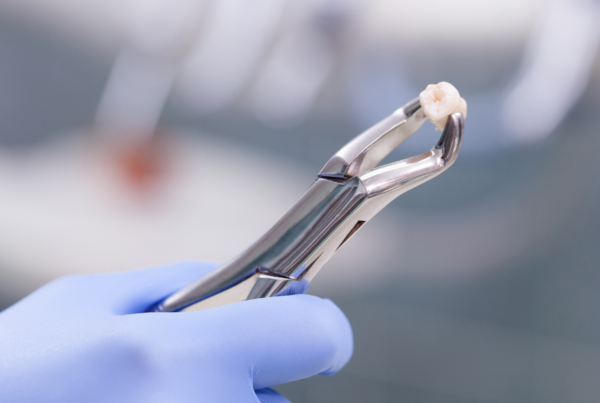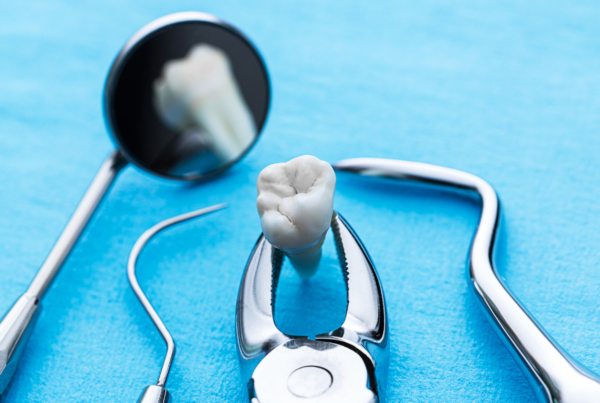
The aesthetics of a smile play a key role in shaping self-confidence and social perception. Proper alignment of teeth in the dental arch not only affects appearance but also the health of the entire oral cavity. Crowded teeth, malocclusion, or a lack of space in the arch are common problems many patients face. Modern orthodontic methods allow for effective correction of such defects without the need for invasive techniques. One such method is dental stripping—an orthodontic procedure that gently reduces the width of teeth to create additional space in the dental arch. In this article, we explain what dental stripping is, when it is used, its advantages and disadvantages, how the procedure is performed, and what alternatives are available.
What is dental stripping?
Dental stripping involves gently filing the contact surfaces of teeth to gain additional space in the dental arch. Modifying the width of the teeth helps align them correctly, especially in cases of mild crowding. Stripping is performed on both the upper and lower jaw, typically on several teeth. This creates room in the arch, facilitating the proper positioning of teeth during orthodontic treatment. The procedure is carried out with precision to preserve enamel integrity and avoid damage.
Although relatively simple, stripping requires the experience and knowledge of a dentist or orthodontist. It helps solve functional problems such as crowding and improves the overall appearance of the smile by adjusting tooth proportions, especially in the front teeth.
Previously, dental stripping was less common due to the lack of modern tools and techniques. Today, thanks to advancements in dentistry, it has become a standard part of orthodontic treatment planning.
When is dental stripping used in orthodontic treatment?
Dental stripping is applied in various situations, particularly in orthodontics and aesthetic dentistry. The most common indications include:
- Teeth crowding—when teeth are too close together, making proper alignment difficult.
- Lack of space in the dental arch—stripping provides extra room, helping to avoid tooth extractions before applying fixed braces.
- Bite correction—stripping allows for proper alignment of teeth in the arch, improving bite function.
- Smile aesthetics—used to reduce the width of large teeth, enhance proportions, or close gaps (such as diastemas).
- Gum recession prevention—in crowded teeth, stripping can reduce pressure between teeth, lowering the risk of gum damage.
This method is frequently used in patients wearing fixed or removable orthodontic appliances like Invisalign. Stripping enables accurate space planning for optimal tooth alignment. It is often used before placing braces to ensure smooth tooth movement. In some cases, it also improves tooth proportions in patients with irregular tooth shapes.
READ MORE: How much does teeth whitening at the dentist cost?
How is the stripping procedure performed?
Stripping is a relatively fast and simple procedure that requires precise planning and dental expertise. The stages typically include:
Diagnosis and planning
Before performing stripping, the dentist or orthodontist collects a thorough medical history and conducts tests such as X-rays or 3D scans. Based on the results, the amount of enamel to be safely removed—typically between 0.1 and 0.5 mm per side—is determined.
Preparing for the enamel reduction
Stripping is usually painless and does not require anesthesia. However, in cases of tooth sensitivity, local anesthesia may be applied. The teeth are thoroughly cleaned before the procedure begins.
Step-by-step stripping procedure
Using tools such as abrasive strips, polishing discs, or diamond burs, the dentist gently files the side surfaces of the teeth. The procedure is carefully performed to preserve enamel and avoid damage.
Control and finishing
After filing, the dentist verifies whether the created space is sufficient and if the teeth are proportionate. The surfaces are then polished to smooth the enamel and prevent plaque buildup in the treated areas.
Stripping is most commonly used in orthodontics but can also be part of preparation for aesthetic procedures. It is safe when performed correctly and does not compromise enamel structure. The procedure takes a few minutes to half an hour, depending on the number of teeth involved.
Benefits of dental stripping
When properly performed, dental stripping offers several benefits, making it a popular option in orthodontics:
- Minimal invasiveness—the procedure involves light enamel reduction without surgical interventions such as tooth extraction.
- Improved aesthetics—enhancing the shape and proportions of teeth for a more attractive smile.
- An alternative to extractions—for mild crowding, stripping may eliminate the need to remove healthy teeth.
- Orthodontic support—helps align teeth more effectively by creating space, facilitating orthodontic treatment.
- Comfort and speed—stripping is relatively fast and typically painless.
Disadvantages and risks of stripping – does it hurt?
Despite its benefits, dental stripping carries some risks and contraindications, such as:
- Tooth sensitivity—removal of enamel may temporarily increase sensitivity to temperature or sweets.
- Cavity risk—if oral hygiene is poor, the treated areas may become prone to decay.
- Enamel limitations—for patients with naturally thin enamel, stripping may not be advisable.
Although minimally invasive, dental stripping must be done with care to avoid harming tooth structure. Sensitivity may occur but usually resolves within a few days. Some patients worry about enamel damage, but when performed properly, only a minimal layer is removed, which does not weaken the teeth.
How much does dental stripping cost?
The cost of dental stripping depends on the number of teeth involved and the clinic’s location. On average, stripping a single tooth costs between 50 and 150 PLN. For comprehensive orthodontic treatment, the procedure may be included in the full treatment plan price.
Stripping in orthodontics – summary
Now you know what dental stripping is. It is an effective, minimally invasive technique used in orthodontics and aesthetic dentistry. Stripping is most often used to create space in the dental arch, improve tooth proportions and smile aesthetics, and align teeth before fitting braces. The procedure involves vertical enamel reduction on tooth contact surfaces to enable controlled movement. While some patients wonder if enamel filing is harmful, a properly performed stripping does not negatively affect enamel health. It is often an alternative to tooth extraction in cases of minor crowding. It is performed on both the upper and lower jaws and is typically done before placing a fixed orthodontic appliance. If you’re dealing with dental misalignment or planning orthodontic treatment, stripping may be a method worth discussing with your dentist or orthodontist.





